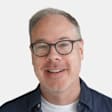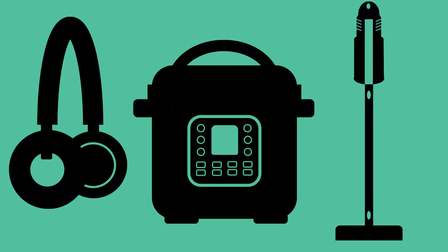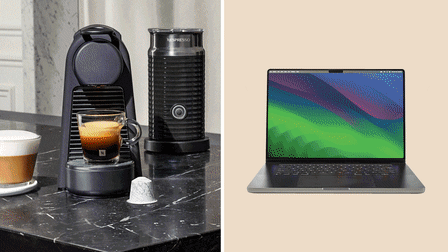Shop Smarter With the Consumer Reports Price Tracker
As tariff talk continues, we're following the prices of 16 popular products to help you navigate marketplace shifts
When you shop through retailer links on our site, we may earn affiliate commissions. 100% of the fees we collect are used to support our nonprofit mission. Learn more.

If you’re sweating over the price of coffee, eggs, and beef these days, you’re not alone.
According to a nationally representative survey (PDF) conducted in October by Consumer Reports, 82 percent of Americans expect grocery prices to rise over the next year. And families are already spending more than usual on supermarket items, according to Consumer Price Index data. More on personal care items, home furnishings, gas and oil for heating, and electricity, too.
Consumer Reports' Price Tracker
What to Know
U.S. shoppers who order groceries for delivery through Instacart may unknowingly have been paying varied prices for the very same products, according to a monthslong investigation by Consumer Reports and Groundwork Collaborative, an advocacy group. In response to the story, Instacart has now halted the practice.
The shifts in pricing were discovered on items stocked at retailers including Albertsons, Costco, Kroger, Safeway, Sprouts Farmers Market, and Target.
It was all part of widespread AI-enabled experiments conducted by Instacart, a company that calls itself “the largest online grocery marketplace in North America.”
“These limited, short-term, and randomized tests help retail partners learn what matters most to consumers and how to keep essential items affordable,” Instacart wrote in a statement.
As part of the joint CR-Groundwork Collaborative investigation, a few hundred volunteers nationwide shopped on Instacart for identical baskets of goods. They simultaneously placed 18 to 20 items in their virtual shopping carts and recorded the prices by taking screenshots. They did not purchase the goods.
About three-quarters of the products we reviewed were offered to customers at different prices. At times, we uncovered as many as five different prices per item. And while the variations ranged from as little as 7 cents to $2.56 per item, those seemingly small shifts can add up to big differences in the overall cost of groceries. The price of the same basket of food purchased from a Seattle-area Safeway, for example, ranged from $114.34 to $123.93—roughly a $10 difference.
Based on Instacart’s estimates on how much the typical household of four spends on groceries, the average price variations we observed could translate into a cost swing of about $1,200 per year.
We also found that Instacart repeatedly showed customers different “original” prices for the same discounted item, making purported savings appear larger or smaller.
Charging different amounts for the same products is not illegal. U.S. consumers have grown accustomed to paying different prices for the same airline seats, event tickets, hotel rooms, and rideshares. But consumers express deep misgivings about algorithmically driven changes in pricing when it comes to essential goods like food.
A nationally representative survey of 2,240 U.S. adults conducted by CR in September 2025 found that 72 percent of people who have used Instacart in the previous year did not want the company to charge different users different prices for any reason.
Hidden Price Shifts
Read about CR’s investigation into how Instacart’s pricing experiments could be affecting you.
Why It's Smart to Buy Tech Products Early
If you’ve been wanting to replace a laptop or phone, you may want to move quickly, before the holiday sales end. Those retailer deals are keeping prices artificially low, even as the technology inside those devices is skyrocketing in price. Not because of tariffs, but because of a massive shortage in computer memory.
Major tech companies are placing open-ended orders for RAM to power their new AI data centers, according to reporting by Reuters. They’re effectively telling manufacturers they will buy as much as can be delivered, regardless of price. This has encouraged RAM manufacturers like Samsung and SK Hynix to pivot their factories away from making consumer-grade memory to prioritize high-profit enterprise chips. And with only three major RAM manufacturers in the market today, there isn’t enough wiggle room to absorb the demand.
“There’s just no RAM in the market,” according to Tom, the creator of Moore’s Law Is Dead, a popular media outlet that tracks the computer industry. (To protect his privacy, he uses only his first name online.) “This isn’t price gouging by your local retailer. Retailers like Best Buy or Micro Center aren’t arbitrarily marking up sticks of RAM to make a quick buck. In fact, they are frustrated because high prices drive customers away.”
And the scarcity is spreading beyond RAM. The demand for AI chips is squeezing the supply of NAND flash (used in solid-state drives) and traditional hard drives, as well. DigiTimes Asia recently reported that contract prices for traditional hard drives jumped roughly 4 percent in the last quarter as cloud giants buy up massive high-capacity drives.
Experts warn that we’re about to experience shortages that could make 2026 a very expensive year for consumer electronics. The effects may extend beyond computers—impacting everything from TVs to tablets to smartphones to smart-home devices, too. For tips on how to shop for those items, check out our full story on the RAM shortage.
What's Up With the Vacuum Cleaner?
At this time of year, we all expect popular gift items to be on sale. TVs, laptops, suitcases, kitchen mixers, and other home goods tend to dip in price during the holiday shopping season. But rarely have we witnessed the sort of routine price shifts associated with the ever-popular Shark Navigator Professional NV360 vacuum cleaner.
We knew when we launched Price Tracker in May that CR members are fond of the model. But we were surprised to see how much the price for the vacuum has fluctuated. We’ve watched it rise and fall by $30, $40, even $60 from one week to the next, climbing as high as $206.99 in late August, then dropping to $119.99 in late October. (That’s what it’s going for right now, as well.)
So we asked Jordan Carter, who monitors floor care items for OpenBrand, to share some insight on what we’re observing.
“This is a frequently discounted model,” Carter says, “likely due to its age and popularity in the upright vacuum segment.” According to Carter, the NV360 is often used to draw shoppers into a store or onto a retail website.
Meanwhile, the pricing for other vacuums is much less volatile. When tariffs were announced last spring, the NV360 jumped from $129.99 to $189.99, and Shark raised prices on other vacuums, too. But that was unusual.
“Vacuums held strong in terms of pricing for quite a while, outlasting many small appliance categories,” Carter says. “Regardless, the tariff rollout in August finally led to a majority of leading U.S. floor care brands responding with higher prices.”
Models from Dirt Devil, Dyson, Hoover, and Tineco rose in price that month. But there was at least one outlier. “Bissell hasn’t shown many price increases due to tariffs,” Carter says, “and has been fairly stable this year.”
Consumers Are Bracing for More Price Increases
How are Americans dealing with the economic uncertainties of 2025?
In October, we asked 2,191 U.S. residents to share their thoughts in a nationally representative survey (PDF).
More than half said they were very or extremely concerned that the price of products and services would rise over the next six months.
Eighty percent or more said they expected costs to go up over the next year for groceries, household items such as laundry detergent, paper towels, trash bags, electronics, large appliances, cars and trucks, and utilities.
Among those who expected price increases in at least one category, three-quarters pointed to tariffs as a cause. Additional factors included other government policies, like interest rates or regulations (49 percent); higher energy or fuel prices (45 percent); increased corporate profits (41 percent); supply chain disruptions (38 percent); and higher labor costs (37 percent).
And, finally, we asked respondents what they had done in the previous six months to manage their household spending. Here’s what they told us.
- Twenty-eight percent have stocked up on items they thought might get more expensive.
- Thirty percent have bought used or secondhand items instead of new ones.
- Thirty-three percent have postponed a planned purchase.
- Forty-five percent have shopped at different stores or online platforms to save money.
- Forty-five percent have purchased fewer of certain items.
Head-Scratching Pricing Practices
If you often search for deals, you’re familiar with the list prices retailers post when promoting discounts.
For example, the LG washing machine we’ve been tracking since mid-May currently sells for $849 to $948 at the three retailers we monitor. But retailer websites make it look like you’re getting a great bargain by including a list price, too. Home Depot and Lowe’s say the appliance is being discounted from $1,199. At AJ Madison, the figure is $1,319.
So where do those list prices come from?
According to LG, the $1,319 at AJ Madison is the manufacturer’s suggested retail price, aka the MSRP. The $1,199 shown at Home Depot and Lowe’s is LG’s minimum advertised price, or MAP. Manufacturers use a MAP to protect the value of their brand, preventing retailers from pitching products at bargain basement prices, though the retailer can actually sell those items at any price it wants.
Enforcing the MAP can be tricky, says Utpal Dholakia, a professor of marketing at Rice University Business School in Houston. MAP pricing is legal under the antitrust laws here in the U.S. as long as the price is set unilaterally and isn’t specific to any retailers. In many other countries, including the U.K. and those in the European Union, the practice is restricted because it can hinder competition.
In the U.S., manufacturers try to enforce compliance with their MAPs, but not all companies have the same pull. “Apple has more brand power, so I would guess their MAP policies are far more stringent and something that retailers follow more strictly,” Dholakia says.
So does that washing machine ever sell for the MSRP? Or even the lower MAP? It’s hard to say, but LG is currently offering it for $949 on its website.
What does that mean for bargain hunters? A product’s price might be the same across retailers, Dholakia says, but the details can vary. One retailer may provide benefits such as free delivery and installation, free haul-away of the old appliance, an extended warranty, or a maintenance plan. That’s where you can look for a deal.
Shopping Tips
Here are a few more things to keep in mind.
Don’t panic-shop. It’s easy to get caught up in the fear of rising prices, but don’t lose your cool and buy things you’ll regret owning later.
Don’t hold off on the items you’ve planned to purchase. If you’ve been gearing up to buy a new refrigerator, doing it now still makes sense, especially if you have money budgeted for it and the price has remained steady.
Choose reliable products. Higher prices could persist, so choose products that are likely to serve you well in the long term. CR members can use our ratings to review the most and least reliable brands in many categories, including central air conditioning systems, dishwashers, dryers, heat pumps, refrigerators, vacuums, and washing machines.
Shop for older models. TVs, laptops, and smartphones that are a year or two old often remain available at stores even after newer models arrive. The iPhone 16, for example, dropped $100 in price after Apple introduced the iPhone 17 in September. The AirPods Pro 2 and Apple Watch 10 are selling at a nice price now, too ($199 and $249, respectively).
Consider a used or refurbished product. While this advice doesn’t work equally well for all categories, you might find that purchasing a factory-refreshed or gently used appliance, laptop, or phone can save you money. Apple, Best Buy, LG, Samsung, and others certify the items they resell and even offer new warranties.
Use CR for Smart Buys and up-to-the-minute deals. Consult our ratings for help finding products with a nice price and admirable performance. Apple and Samsung both sell well-made, budget-friendly phones, for example. (See the iPhone 16e and the Galaxy A25 5G.) They’re much less expensive than flagship models but still do almost everything you want a modern smartphone to do.
Consumer Reports also has a devoted team of deal seekers who continually round up the best bargains on highly rated products. They’re searching for the best holiday deals right now. You can find their picks at the CR Deals hub.




















